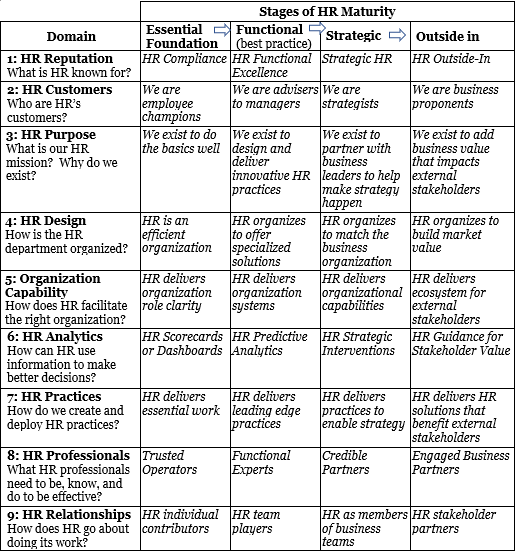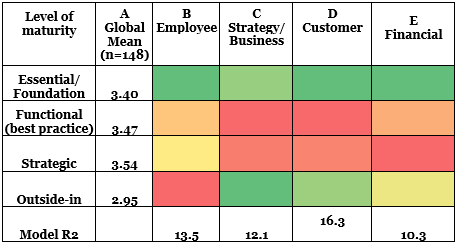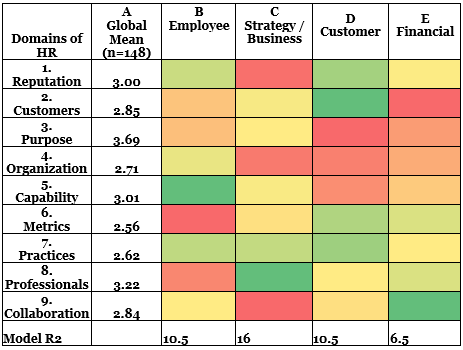What are the results of your HR initiatives?
- 4 Min Read
HRD Thought Leader Dave Ulrich and Norm Smallwood discuss how to optimize HR initiatives to succeed in today’s fraught market.
- Author: Dave Ulrich
- Date published: Nov 10, 2020
- Categories

The crises of our day (the coronavirus pandemic, racial and civil unrest, global immigration, economic decline, political squabbles, and personal and emotional malaise) have accentuated the importance of HR initiatives to help an organization succeed in the marketplace.
Numerous HR innovations in programs, processes, practices, and digital apps have occurred under the rubric of HR transformation. We believe it is time to offer guidance on the extent to which organization effectiveness initiatives in talent, capability, and leadership deliver results to employees, strategies, customers, investors, and communities. We have developed and offered a free Organization Guidance System (OGS) to guide the portfolio in these efforts.
HR transformation underlies organization effectiveness. We have written 13 books and hundreds of articles, collected data from over 100,000 respondents, offered hundreds of workshops, and consulted on how to deliver HR transformation. We have evolved the study of HR transformation into four stages of maturity and nine domains of action.
Figure one provides a comprehensive template for assessing overall HR Transformation along nine domains for each of the four levels of maturity (36 cells overall).
Figure one
HR transformation:
Four stages of HR maturity across nine HR domains

Our point of view on HR Transformation is not limited to these 36 cells, but the extent to which the work in these 36 cells delivers results. We believe that describing the maturity and activity of HR can be dramatically advanced by prescribing which of the stages of maturity and domains of activity should be focused on.
Report guidance on human resource transformation
After 18 months of creating an OGS, we can now report how well companies perform on the four stages of maturity and nine domains of HR ,and the impact on results. Figure two reports pilot results (with a sample of 148 respondents) about the performance and impact of the four stages of HR maturity on four key results. This figure reports the overall mean (column A) of the four stages of maturity (with outside in being the lowest score) and the relative impact of each of the four stages (rows) on four outcomes we measured in the pilot (columns B , C, D, and E). We used proprietary analytics (variance decomposition) to understand how different levels of HR maturity (rows) will deliver different results (note: in the pilot we focused on four results; we now have added a fifth, social citizenship).
We think these results are rather startling. First, we had assumed that essential HR work was not as critical for results as the ‘strategic’ and ‘outside-in’ HR work. Our results show that doing ‘essential/foundation’ work is critical to all results (green scales in column B, C, D, E).
Figure two:
Stage of HR maturity and results

Second, we worked to understand these results and discovered in figure three a very different view of the stage of HR maturity and results depending on who answered the survey. HR professionals saw improved financial performance from doing ‘essential/foundational work’; while non-HR respondents (business leaders) see ‘HR outside-in’ as much more critical for financial performance. This dramatic difference in the perceived impact of HR stage and financial results may suggest that HR professionals and line managers see the impact of HR work differently.
Thirdly, in figures two and three, we found that functional excellence (best practice) and strategic HR are highly correlated (r=.82) and neither focus delivers results that matter. It may be time to do less ‘best practice’ or even ‘strategic’ HR work and more focus on aligning HR initiatives to external stakeholders.
Figure three:
Financial performance by rater background (HR vs. non-HR)

In figure four, we report the findings by the nine domains of HR activity. The results here are also striking as they inform the effectiveness of HR transformation. First, the attention on ‘HR organization’ does not show much impact on any of the results. We still find that most ‘HR transformation’ work obsesses on the HR design. This research shows that ‘HR practices’ has the most impact on the results. Second, it is interesting that each result is shaped by different HR domains. We need to further explore why these results require different domains of HR transformation.
Figure four:
Nine domains of HR activity and results

These findings dramatically shift the discussion of HR transformation from what is done to what should be done. While these findings are with a small pilot sample, the implications of this human resource guidance are profound. Rather than randomly create innovative HR initiatives, business and HR leaders can receive rigorous guidance on where to focus for results.
This OGS is free to anyone and can deliver results for HR initiatives. Simply visit www.rbl.ai to get started.









